Line reactors play a key role in protecting motor drives and improving system performance. Whether you’re working on an industrial automation setup, a VFD system, or renewable energy equipment, choosing the right line reactor is essential. In this guide, we’ll walk you through what a line reactor does, how to select the right one, and where to buy it.
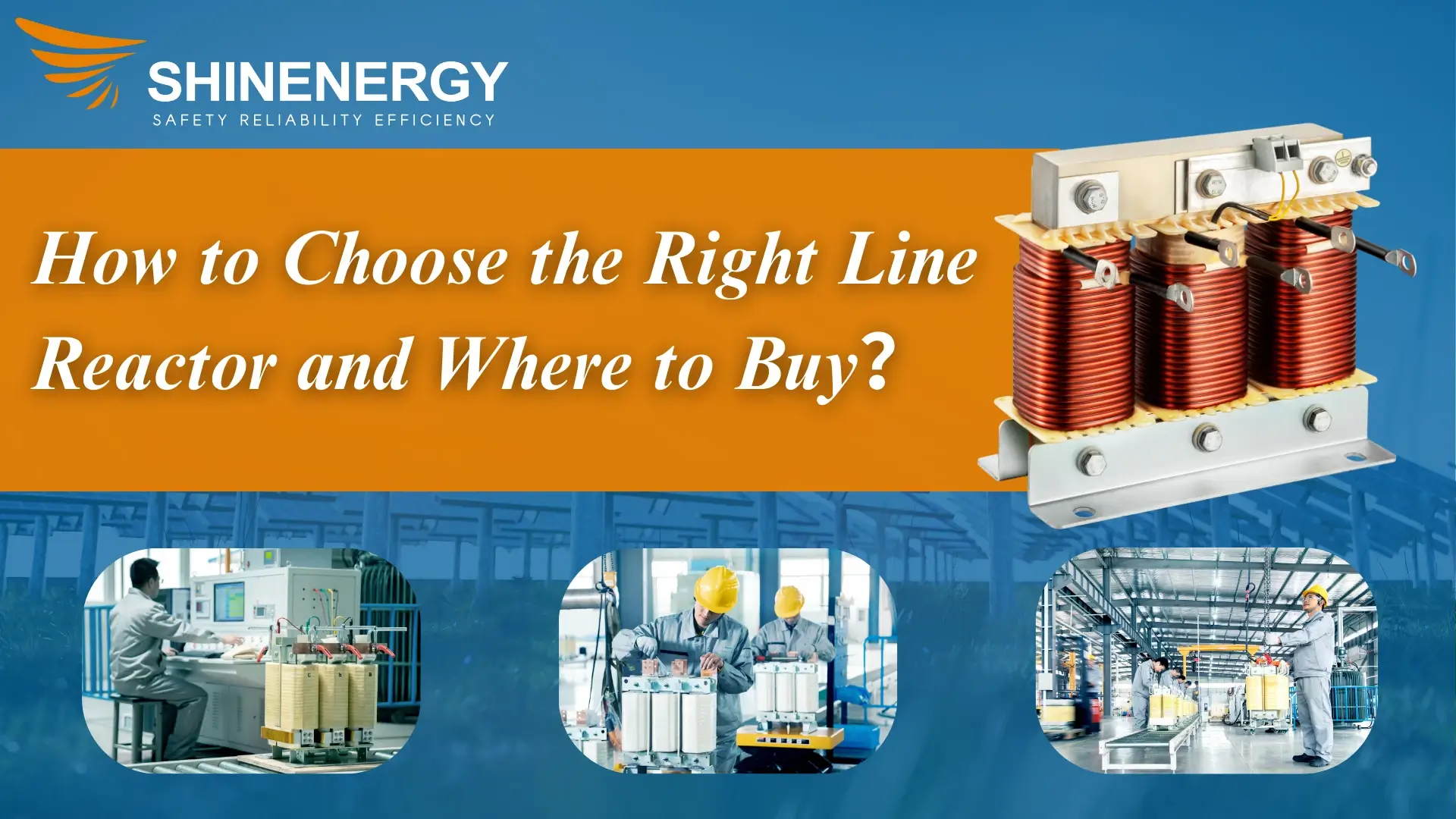
P1-line reactor
What Is a Line Reactor?
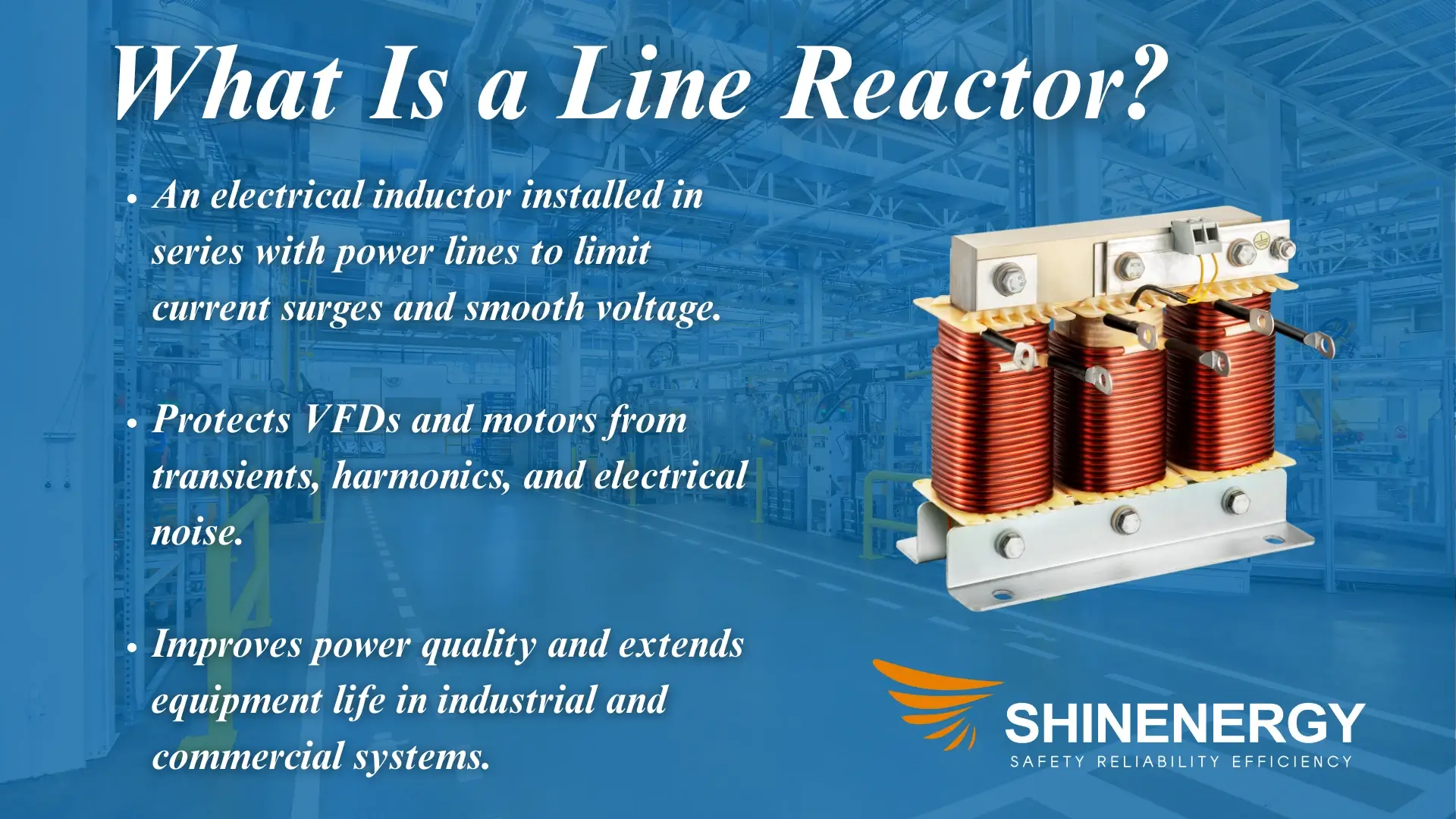
P2-what is a line reactor?
What are line reactors? A line reactor definition is a type of inductor installed in series with the power line. Ac line reactor limits current spikes, filters harmonics, and line reactors for vfd protects sensitive devices like variable frequency drives (VFDs) and motors. By reducing voltage distortion and improving power quality, line reactors help extend equipment lifespan and reduce maintenance costs.
Why Use a Line Reactor?
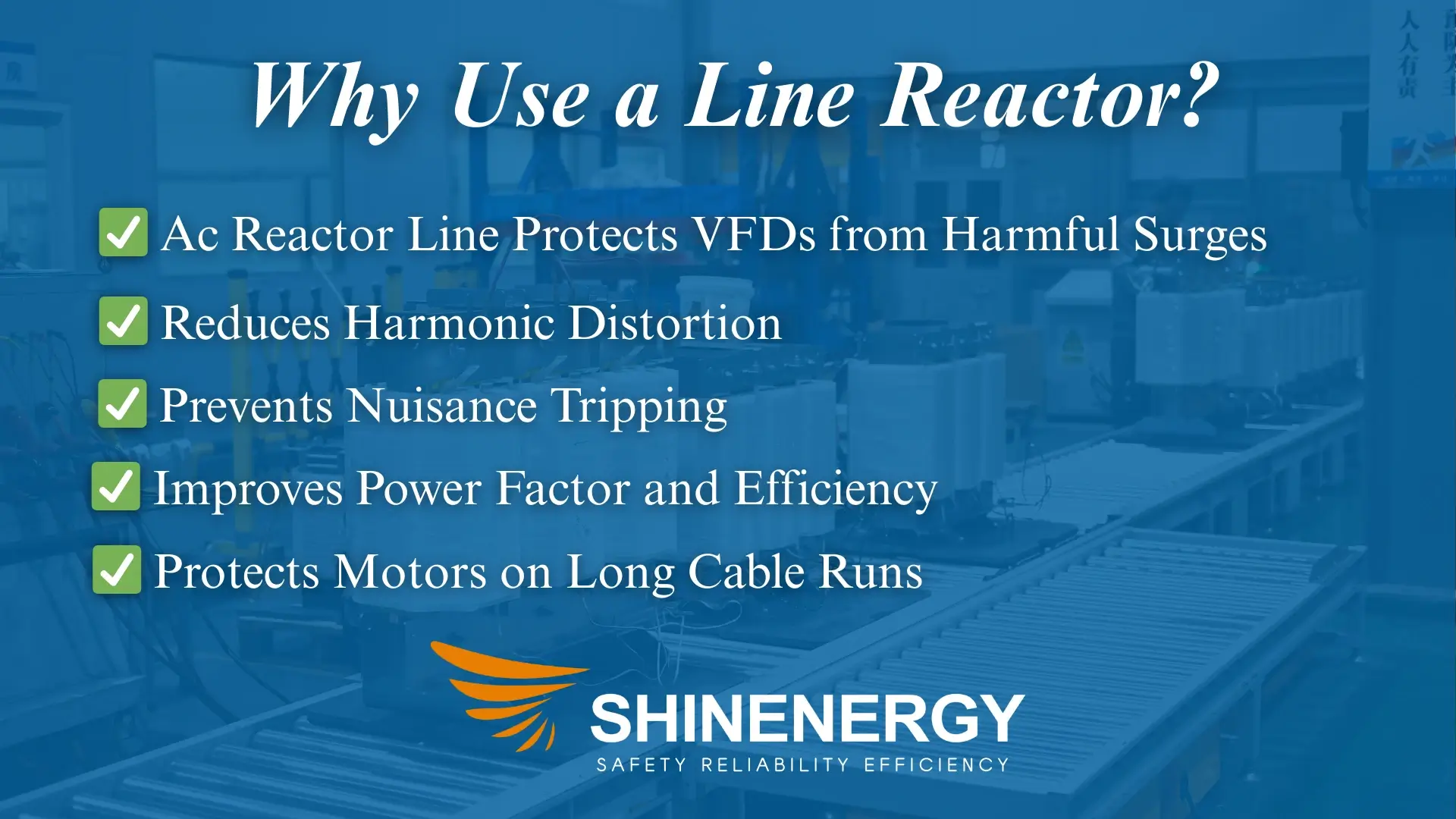
P3-line reactors
What is the purpose of a line reactor? Line reactors are essential for improving power quality and protecting electrical equipment. They are widely used with variable frequency drives (VFDs) and motor control systems. Here’s why engineers and system designers choose them:
✅ Ac Reactor Line Protects VFDs from Harmful Surges
Line reactors absorb voltage spikes and inrush currents. This protects VFDs from sudden power disturbances and extends their lifespan.
✅ Reduces Harmonic Distortion
By filtering out harmonics, line reactors improve the overall power quality. This helps prevent overheating and unwanted trips in sensitive equipment.
✅ Prevents Nuisance Tripping
Voltage imbalances and transients can cause false trips. The line reactors stabilize voltage levels and help your system run smoothly.
✅ Improves Power Factor and Efficiency
The Line ac reactor reduces the peak current drawn by the drive, improving the system’s power factor. This leads to better energy efficiency and lower utility costs.
✅ Protects Motors on Long Cable Runs
When drives are located far from motors, voltage spikes and reflected waves can occur. Output line reactors minimize this risk and ensure stable motor operation.
In short, using the line reactors is a simple yet powerful way to enhance reliability, lower maintenance, and increase the performance of your power system.
Where Are Line Reactors Used? What is a line reactor used for?
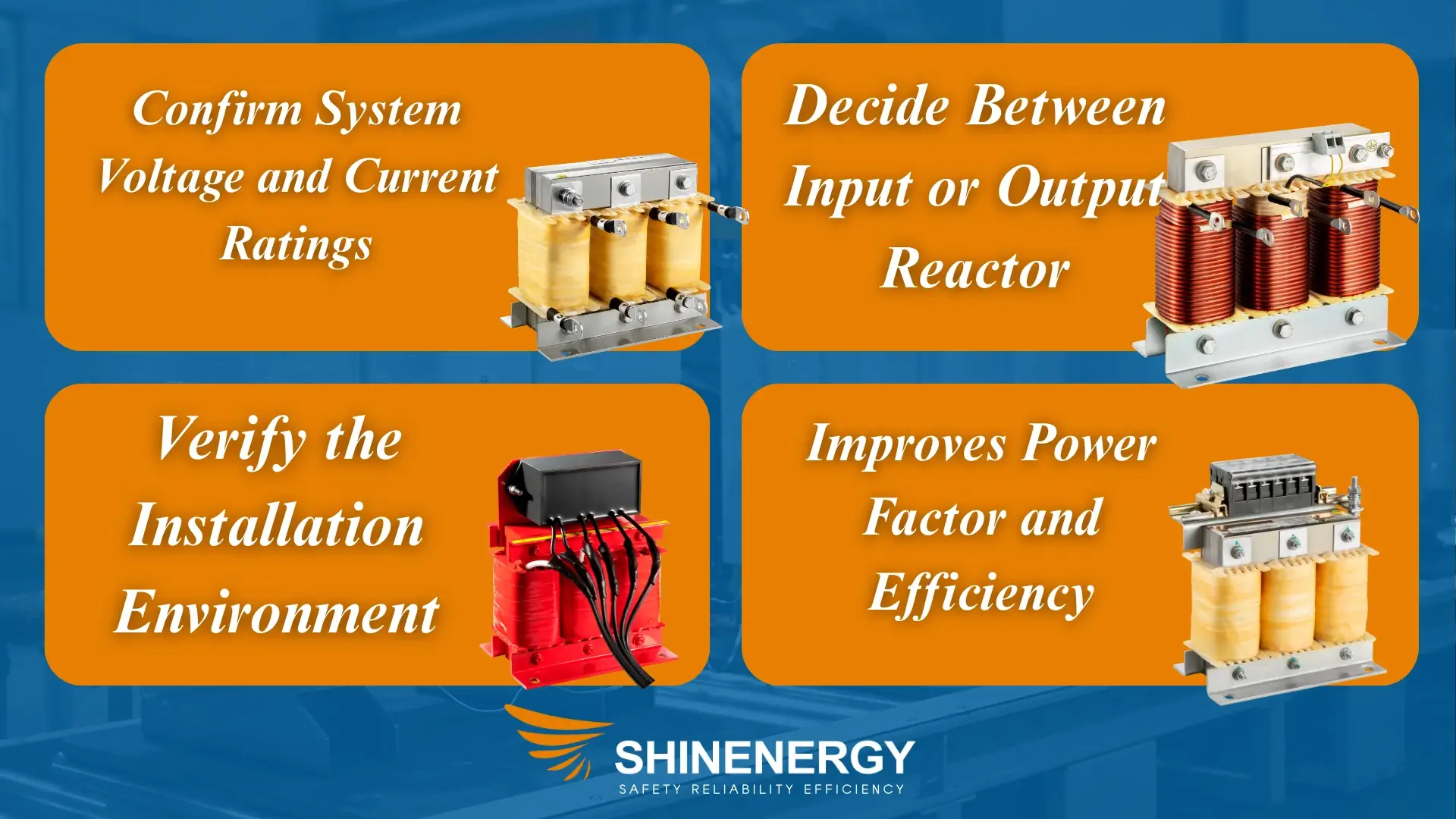
P4-ac line reactor
What is line reactor in electrical? Line reactors are widely used in industrial and commercial power systems. The 3 phase reactor are designed to improve power quality, protect sensitive components, and ensure stable equipment operation.
Here are the most common applications:
✅Variable Frequency Drives (VFDs)
line reactors and vfds is the most common use case.
- Input reactors protect VFDs from utility line disturbances
- Output reactors protect motors from high-frequency voltage spikes
- Ideal for HVAC systems, conveyors, pumps, and compressors
If your VFD is tripping or the motor is overheating, a line reactor may be the missing link.
✅Long Cable Runs Between Drive and Motor
When the distance between a VFD and motor exceeds 30 meters (100 feet), voltage reflections and wave distortion can damage the motor.An output line reactor reduces these reflected waves and ensures smooth operation.
✅Harmonic-Sensitive Environments
In environments with multiple drives or sensitive electronics, harmonics can cause overheating, signal interference, and equipment malfunction. Line reactors help reduce total harmonic distortion (THD) and three phase reactor improve overall power quality.
✅Renewable Energy Systems
Line reactors are used in solar inverters, wind turbine converters, and battery energy storage systems. The 3 phase line reactor helps smooth the power output, stabilize DC/AC conversion, and protect power electronics from grid noise.
✅Industrial Control Panels and OEM Equipment
Many control systems include line reactors to meet EMC compliance, protect switching devices, or balance loads in panel assemblies.
In short, if your system includes a VFD, has long motor cables, or operates in a harmonic-heavy environment, a line reactor is likely essential.
How to Choose the Right Line Reactor? How to select line reactor for vfd?
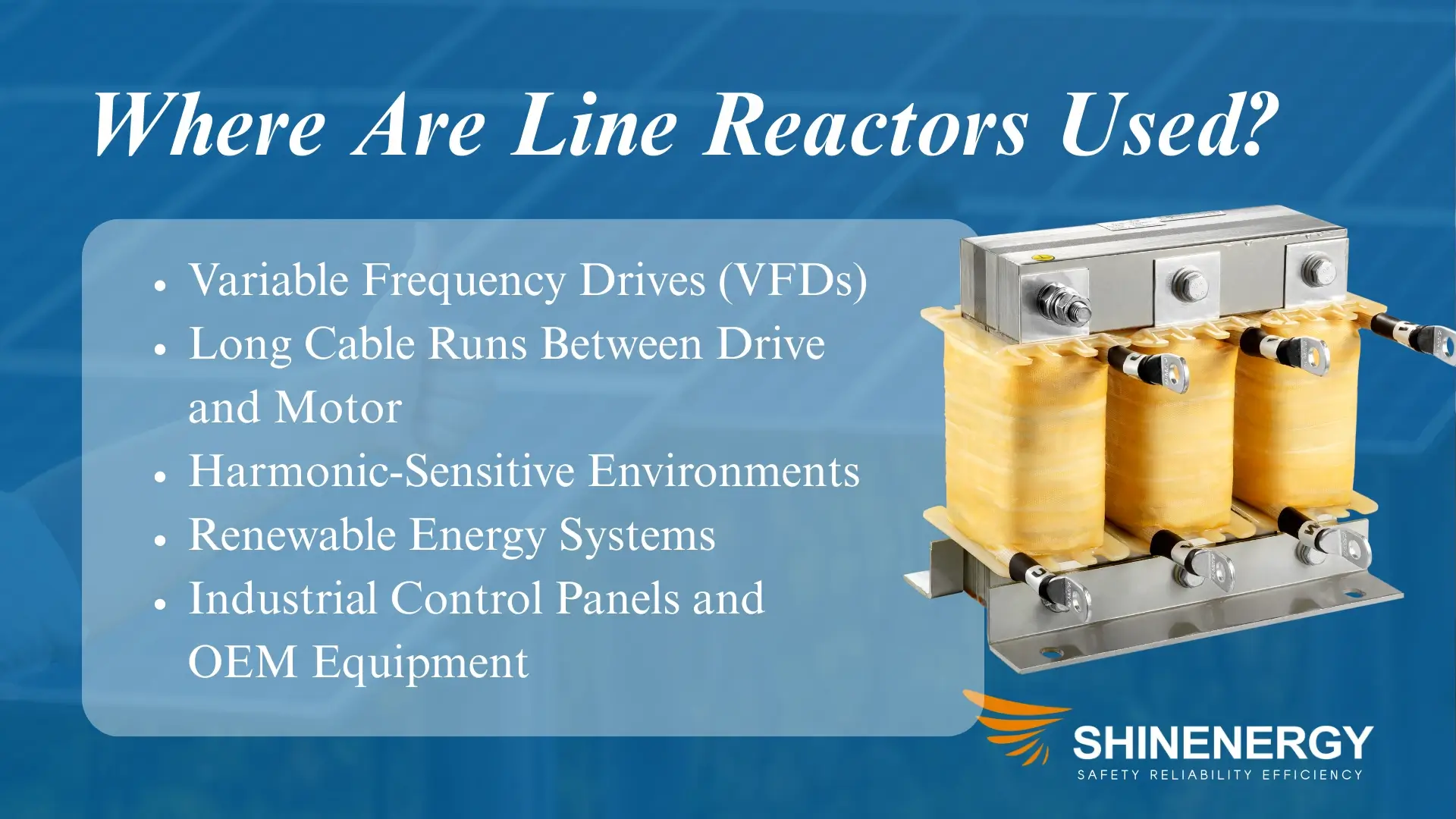
P5-line reactor vfd
Selecting the right line reactors ensures that your power system runs safely and efficiently. Here’s a step-by-step guide to help you make the right decision:
✅Confirm System Voltage and Current Ratings
Start by identifying your system’s voltage and full-load current.
The line reactors must match or exceed these ratings to operate safely under load.
Example: For a 480V, 30A motor driv
- Best for high harmonic environments
- Offers stronger filtering and voltage smoothing
Tip: Higher impedance means better protection, but also more voltage drop—balance based on your load sensitivity.
✅Decide Between Input or Output Reactor
Different positions offer different protection:
Input line reactor
- Placed before the VFD
- Protects the drive from grid voltage spikes and harmonic distortion
Output line reactor
- VFD line reactors Installed between the VFD and the motor
- VFD line reactors Protects the motor from high dv/dt and long cable effects
Some systems use both for maximum protection.
✅Verify the Installation Environment
Check mounting style, enclosure type, and cooling method.
Will the reactor be panel-mounted or cabinet-mounted?
Do you need IP-rated enclosures for dust or moisture?
Is there enough airflow for natural or forced air cooling?
✅Check for Compliance and Certifications
If your project involves regulate
- CE (Europe)
- RoHS (Environmental compliance)
Custom labeling or documentation if used in OEM products
✅Consider Customization Needs
If you have a non-standard system or tight cabinet space, look for suppliers that offer:
- Custom voltage/current ratings
- Compact footprint designs
- Integrated thermal sensors or protection features
Final Tip:
Always consult your VFD or system manual. Many manufacturers recommend specific reactor sizes or impedance levels based on the drive model.
Choosing the right line reactor isn’t just about specs — it’s about matching performance with protection, and ensuring long-term system reliability.
Where to Buy Line Reactors
If you’re looking for high-quality line reactors for industrial or commercial applications, there are three common sourcing channels:
Direct from Manufacturer – Custom Solutions Available
For customized, project-specific, or OEM needs, working directly with a manufacturer is often the best option.
Custom Line Reactors from Shinenergy
At Shinenergy, we specialize in designing and manufacturing custom electrical reactors for a wide range of applications—from VFD systems and HVAC to solar and energy storage.
What Makes Us Different:
- Tailored designs for your voltage, current, impedance, and installation needs
- Support for both input and output reactors (up to 1000A and beyond)
- 3% or 5% impedance, single-phase or three-phase options
- UL, CE, RoHS certifications available for global projects
- Compact structures for cabinet integration and space-limited environments
- Rapid prototyping and low MOQ for special applications
We work closely with engineers, OEMs, and system integrators to deliver optimized solutions, not just standard catalog parts.
Ready to Get a Quote or Technical Recommendation?
Whether you need a datasheet, pricing, or help choosing the right model, our technical team is ready to support you.
Contact us today to discuss your project needs or request a customized line reactors solution.
Your system deserves more than a generic component—choose a reactor that’s built for your performance goals.
Conclusion
Choosing the right line reactors ensures better protection, longer equipment life, and improved system efficiency. Start by understanding your voltage, current, impedance needs, and system layout. Whether you’re managing a plant upgrade or designing a new system, line reactors are a small investment with big returns.
Looking for a trusted line reactors supplier?
Contact us for technical support, product recommendations, or a customized quote.
FQA
❓ What does a line reactor do?
A line reactor reduces voltage spikes, filters electrical noise, and protects sensitive equipment. It helps improve power quality and extends the life of motors and drives.
❓ What do line reactors do in an electrical system?
Line reactors limit inrush current, suppress harmonics, and stabilize voltage. They are commonly used in motor control and VFD systems to prevent overheating and equipment failure.
❓ What does a 3 phase line reactor do?
A 3 phase line reactor provides balanced protection across all three phases of a power system. It helps reduce harmonic distortion, prevents voltage imbalance, and supports smoother motor operation.
❓ What does a line reactor do for a VFD?
For a VFD (Variable Frequency Drive), a line reactor protects the drive from line-side disturbances, lowers total harmonic distortion (THD), and prevents nuisance tripping. It also helps improve system stability during voltage fluctuations.
❓ How does a line reactor work?
A line reactor works by introducing inductive reactance into the power line. This reactance resists sudden changes in current, helping to reduce voltage spikes, suppress harmonics, and protect downstream equipment like motors and VFDs.
❓ How do line reactors work in power systems?
Line reactors work by smoothing out the electrical waveform. They act as a buffer between the power source and the load, absorbing noise, limiting inrush current, and minimizing electrical disturbances across the system.
❓ How does a 3 phase line reactor work?
A 3 phase line reactors works by balancing inductive impedance across all three phases. This ensures equal current flow, reduces harmonic distortion, and prevents voltage imbalances that can damage motors or cause drive faults.
❓ How to size a line reactor?
To size a line reactors, you need to know the system’s voltage, full-load current, and whether the reactor will be installed on the input or output side. Choose a reactor with the same voltage rating and a current rating equal to or higher than your load.
❓ How do you size a line reactor for general applications?
Start by checking your motor’s rated current and voltage. Then, select a line reactor with 3% to 5% impedance, depending on how much harmonic filtering or surge protection you need.
❓ How to size a line reactor for a VFD?
To size a line reactor for a VFD, match the reactor’s current rating to the VFD’s full-load output current. Use 3% impedance for basic protection or 5% impedance for enhanced harmonic filtering and voltage smoothing. Always follow the VFD manufacturer’s recommendations.
❓ How to test a line reactor?
To test the line reactors, use a digital multimeter to measure the coil resistance between terminals. The reading should be low and consistent across all coils. You can also use an inductance meter or LCR meter to verify the inductance matches the rated value.
❓ How to test a 3 phase line reactor?
Testing a 3 phase line reactor involves checking the resistance and inductance between each of the three windings (A-B, B-C, and A-C). All values should be nearly equal. Significant imbalance or an open circuit may indicate a fault in the reactor.
Tip: Disconnect power and isolate the reactor from the system before testing. Always follow safety procedures.
❓What is the define reactor?
what does a reactor do? Reactor reactance in power system explained in simple terms: it is the intentional impedance added by reactors to control fault current and reduce harmonics.Reactors in power system and its affect on transformer can be seen in how they limit short-circuit currents and protect the winding from electrical stress.
❓ What is a load reactor for VFD?
A load reactor, also known as an output reactor, is connected between the VFD (Variable Frequency Drive) and the motor. It is designed to protect the motor from voltage spikes, high dv/dt (rate of voltage change), and cable charging currents, especially in systems with long motor cable runs.
❓ What does a load reactor do?
- Reduces voltage stress on motor windings
- Minimizes harmonic distortion at the motor terminal
- Limits motor heating and insulation damage
- Extends motor life, especially when cable lengths exceed 15–30 meters
- Improves motor performance under high switching frequency
While an input line reactors protects the VFD from incoming power issues, the load reactors protects the motor from VFD-generated issues.
❓when to use linse reactor on vfd?when to use a line reactor with a vfd?
A reactor is an electrical device used to introduce inductance into a power system. It plays a vital role in limiting current, reducing harmonics, and improving voltage stability. In industrial applications, a line reactor for VFD (Variable Frequency Drive) is commonly used to protect both the VFD and the motor from electrical disturbances. Many engineers refer to it simply as a line reactor VFD, especially in HVAC and automation systems.
In power distribution, a reactor in substation</strong> helps manage fault currents and stabilize voltage during switching events. Whether it’s a utility-grade installation or an industrial panel, the right reactor electrical component can significantly improve system reliability.
For three-phase systems, a 3 phase reactor is typically required. It ensures balanced performance across all phases and is widely used in both input and output configurations. Whether you’re designing a new system or upgrading an existing one, understanding the role of a 3 phase reactor is essential for efficient power management.

